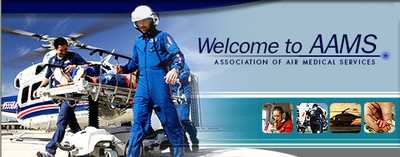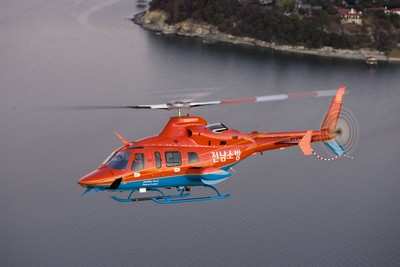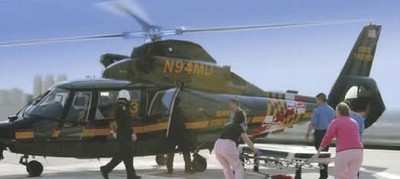Fri, Apr 24, 2009
Stresses Need for Funding of Low-Altitude Infrastructure,
Airport Improvements
Testifying before a crowded hearing, this week, on the Oversight
of Helicopter Medical Services, Association of Air Medical Services
(AAMS) President Sandy Kinkade offered an overview of the medevac
helicopter industry and discussed the need for greater funding for
airport and low-altitude infrastructure improvements, among
other initiatives aimed at making patient air transport
safer. The hearing was called by the U.S. House of Representatives
Aviation Subcommittee to better understand and evaluate the
complex, overlapping factors that relate to safe air-medical
operations.

"Most people don't realize the life-and-death role that
emergency medical helicopters play in our healthcare system. But
the critically ill and injured are airlifted once every 90 seconds
in our nation. That's why it is important not to underestimate the
value of air medical services - because the life saved might be
yours or a loved one's," said AAMS President Sandy Kinkade.
Specifically, AAMS supports improving the low-altitude aviation
infrastructure by expanding the Airport Improvement Program to
include private-use hospital helipads, regional airports and other
routinely utilized locations; and directing more Federal Aviation
Administration (FAA) funding and research toward expanding the
capacity of low-altitude, off-airport weather reporting. AAMS also
is in favor of increasing the number of automated weather
observation stations (AWOS) and utilizing such technologies as the
Helicopter Emergency Medical Systems (HEMS) Weather Tool (www.weather.aero/hems/).
Chief among the association's safety proposals is that all medical
night-flight operations be required to either utilize night vision
goggles (NVGs) or similar enhanced-vision systems, or be conducted
strictly under instrument flight rules (IFRs), in a timeline
established by the FAA and in coordination with air medical service
providers. Today, AAMS recommended that Congress further this
process along by appropriating funds for the FAA to expand its
capabilities surrounding the certification and approval of NVGs or
similar enhanced-vision systems.

In addition, AAMS has asked that funding and study be directed
towards associated approach and departure procedures to facilitate
a seamless transition from visual flight rules (VFR) to instrument
flight rules (IFR). While noting that it is a strong proponent of
mandated enhanced-safety technologies, AAMS also advised that such
requirements offer operators flexibility in choosing enhancements
that ensure the greatest safety suited to their unique operating
environments.

To date, AAMS has taken several proactive steps aimed at
increasing HEMS safety, including coordinating meetings between the
FAA and air medical industry aviation experts, and holding a
full-day Safety Summit last July aimed at identifying and
incorporating effective cultural and operational safety
enhancements.
More News
Terminal Radar Service Area Airspace surrounding designated airports wherein ATC provides radar vectoring, sequencing, and separation on a full-time basis for all IFR and participa>[...]
Aero Linx: Utah Back Country Pilots Association (UBCP) Through the sharing experiences, the UBCP has built upon a foundation of safe operating practices in some of the most challen>[...]
From 2010 (YouTube Edition): Imagine... Be The Change... Inspire FROM 2010: One of the more unusual phone calls I have ever received occurred a few years ago... from Anousheh Ansar>[...]
(Pilot) Felt A Shudder And Heard The Engine Sounding Differently, Followed By The Engine Chip Detector Light On April 14, 2025, about 1800 Pacific daylight time, a Bell 206B, N1667>[...]
Also: AMA Names Tyler Dobbs, More Falcon 9 Ops, Firefly Launch Unsuccessful, Autonomous F-16s The Air Force has begun ground testing a future uncrewed jet design in a milestone tow>[...]
 ANN's Daily Aero-Term (05.07.25): Terminal Radar Service Area
ANN's Daily Aero-Term (05.07.25): Terminal Radar Service Area ANN's Daily Aero-Linx (05.07.25)
ANN's Daily Aero-Linx (05.07.25) Classic Aero-TV: Anousheh Ansari -- The Woman Behind The Prize
Classic Aero-TV: Anousheh Ansari -- The Woman Behind The Prize NTSB Prelim: Bell 206B
NTSB Prelim: Bell 206B Airborne-NextGen 05.06.25: AF Uncrewed Fighters, Drones v Planes, Joby Crew Test
Airborne-NextGen 05.06.25: AF Uncrewed Fighters, Drones v Planes, Joby Crew Test





